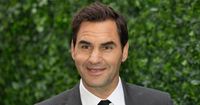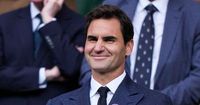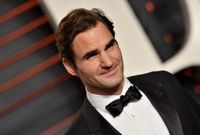Roger Federer, the Swiss maestro who captivated tennis fans for more than two decades, has officially joined the most exclusive club in sports: the billionaire athletes. Forbes reported on August 22, 2025, that Federer’s net worth has soared to an estimated $1.1 billion, making him just the seventh athlete in history to reach this financial milestone. It’s a staggering achievement, one that cements his legacy not only as a legend on the court but as a business powerhouse off it.
Federer’s journey to billionaire status is a story of talent, timing, and tireless work—both with a racket and with a keen business sense. Over his illustrious 24-year career, Federer spent 310 weeks as the world’s top-ranked men’s singles player, captured 20 Grand Slam singles titles, and amassed 103 tournament victories. His prize money alone totaled nearly $131 million, ranking him third in tennis history behind only Novak Djokovic and Rafael Nadal. But here’s the kicker: Federer’s real fortune was built outside the white lines of the tennis court.
According to Forbes, Federer’s off-court earnings—endorsements, appearances, and business ventures—topped a jaw-dropping $1 billion before taxes and agents’ fees. His sponsor portfolio reads like a who’s who of global luxury brands: Uniqlo, Mercedes-Benz, Rolex, Lindt, Moët & Chandon, and more. Lisa Delpy Neirotti, director of the sport management program at George Washington University, put it succinctly: “Between his character and his likability, that’s a big thing. You may be a great athlete on the field, but not everyone likes you. He’s kind of debonair. He’s got good looks. He’s very polite. He’s sophisticated, and his brands reflect that.”
Federer’s appeal was never just about his elegant backhand or his cool under pressure. It was about the image—clean, classy, and universally admired. That image translated into long-term sponsorships, some lasting more than a decade, and allowed him to rake in more than double what his greatest rivals, Djokovic and Nadal, earned off the court. In 2020, Federer was the world’s highest-paid athlete, earning $106.3 million before tax, according to Forbes.
But the real game-changer came in 2019, when Federer made a bold move into the business world by investing in On, a Swiss running shoe and apparel company. Inspired by his wife’s affinity for the brand, Federer reached out to On’s founders and struck a deal for a 3% equity stake. He didn’t just lend his name—he helped develop an on-court tennis shoe and a lifestyle apparel line. When On went public on the New York Stock Exchange in 2021, Federer’s stake ballooned in value to more than $375 million. As Marc Maurer, then On’s co-CEO, told Forbes, “Roger was the accelerator. We basically wanted to open the door, and we were clear that tennis is the next sport. We were very fortunate that Roger embarked on that mission together with us.”
Federer’s investment acumen doesn’t stop there. He co-founded Team8, a management company, and helped launch the Laver Cup, an annual team tennis tournament now sanctioned by the ATP Tour. The Laver Cup has become a consistent draw for big-name talent and a profitable venture, with this year’s edition in San Francisco expected to exceed $20 million in sponsorship and ticketing revenue. Federer has also invested in NotCo, a Chilean food tech startup specializing in plant-based foods, joining other celebrity investors in a $235 million funding round.
All this business activity hasn’t distracted Federer from his personal life. Since retiring in September 2022, after injuries limited his final years on tour, Federer has embraced a new chapter. In a 2024 interview with GQ, he said he was “really relieved” to be retired, focusing on designing clothes, traveling, and spending time with his four children. “Tennis was my identity, but it was not what I was doing all day every day. I mean, for the most part, I’m being more of a dad and a husband and a son. Being a tennis player was my hobby, and then that became my job,” Federer explained. “But I always tried to not identify myself just purely as a tennis player. When tennis was taken away or put aside, well, I still had all the other things. And I think that mindset has anyway been a strength of mine throughout my career. I knew that if tennis ends tomorrow, which it can with an accident or whatever, it happens, you have to be able to live with yourself without the game.”
Despite the satisfaction he’s found in retirement, Federer hasn’t completely closed the door on tennis. In April 2025, he hinted in an interview with TNT Sports that he missed the rigors of training and might return to the court for exhibition matches. “Honestly, I would love to play some more tennis again. Enough with the golf already for a moment now, I’ve played so much. But no seriously, I would love to start playing like two-three times a week again and hopefully, get myself back on an exhibition court. Maybe fill up a few nice stadiums around the world. I have no plans yet but I know that the training part is—I miss it a little bit to be honest because I haven’t played a whole lot since I retired,” Federer said.
Fans won’t have to wait long to see him back in action. In October 2025, Federer is set to compete in a celebrity mixed doubles event at the Rolex Shanghai Masters tournament. The event marks his return to Qizhong Stadium, a venue that holds special memories for the Swiss legend. Federer won the Shanghai Masters twice, in 2014 and 2017, and also captured the ATP Finals in Shanghai in 2006 and 2007. “I am really happy to be returning to Qizhong Stadium in Shanghai for the Rolex Shanghai Masters. Shanghai has always been a special place for me with great fans, unforgettable memories, and a real love for the game,” Federer said in a video released by the tournament.
Federer’s influence stretches far beyond the tennis court. His social media following is massive, with 43.5 million followers across Facebook, Instagram, and X (formerly Twitter), second only to Rafael Nadal among tennis players. His engagement rate on these platforms is also impressive, outpacing both Nadal and Djokovic. And as Lisa Delpy Neirotti points out, “I think it’s enduring. I think he will be able to sustain this.”
Joining the billionaire ranks puts Federer in rarefied company. Other athletes to cross the billion-dollar threshold include Michael Jordan, Magic Johnson, LeBron James, Tiger Woods, Phil Mickelson, Cristiano Ronaldo, Lionel Messi, and Floyd Mayweather. Federer is only the second tennis player to do so, following Romanian Ion Țiriac, who made his fortune through business ventures after his playing days.
As Federer prepares for his Shanghai return—and perhaps more exhibition appearances in the future—he does so as a symbol of what’s possible when world-class talent meets world-class business savvy. The Swiss icon’s story isn’t just about winning titles; it’s about redefining what athletes can achieve, both on the court and in the boardroom. With his legacy secure, Federer’s next chapter promises to be as compelling as the last.


